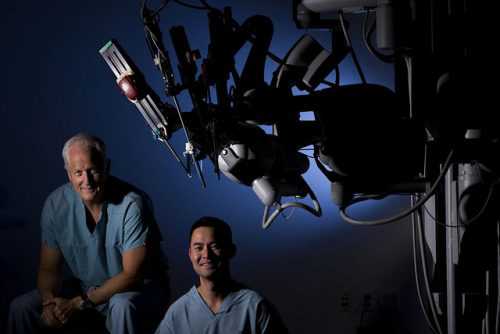Remarkable Robotic Advancements in Healthcare
In recent times, there has been a significant rise in the incorporation of biomedical engineering technology in the global medical sector. A recent study conducted by the Credence Research indicated that the medical robotics market was worth $7.24 billion back in 2015 and by 2023, it is expected to have grown by $12.76 billion globally. Engineers have opted to create these medical robots for the healthcare sector for many valid reasons that have been visualized through the history of robots.??
First, these bots are capable of performing medical operations with precision and top-notch reliability since they never get weary or have their hands tremble. They can make small movements that are beyond the range of motion for human beings as well as automate repetitive procedures that aren?t too complex. The increasing demand for this technology is attributed to the use of robots in non-invasive surgeries in orthopedic, laparoscopic, and neurological procedures. Here, we have listed the most common high-level medical bots that are in use in the medical field today.

Image from UIC
The da Vinci Surgical Bot
The da Vinci surgical operations system is a remarkable bot with multiple arms that has been incorporated to help eliminate the prevalence of surgical errors and at the same time, making surgical procedures a little less invasive for the patients. Surgeons have attributed this wonderful piece of technology to attaining good control of their surgical operations. This bot does this by utilizing its magnified three-dimensional vision capability with controls that are strapped on the wrists and hands of a surgeon.
Through its embedded subsystem, the da Vinci makes small and precise incisions that human hands cannot make offering better control and quicker healing periods for the patients. Quick healing is as a result of lesser bleeding and reduced infection risk. This bot has been identified as a standard for Robot-Assisted Surgeries since the surgeon has full control. There has been continued advancement of this model with tech firms trying to develop a wider range of abilities for robots in the future.??
The Disinfectant bot
Hospitals are sometimes high-risk places and as a result, patients who go there have a high chance of contracting new infections. Hospitals also house some of the most stubborn antibiotic-resistant bacterial organisms since they dispense plenty of antibiotics. It is therefore imperative that cleanliness is observed round the clock.
Sometimes, human beings are bound to make significant errors while cleaning up and hence the need for a machine that will not make such mistakes. These are the disinfectant robots that work to eliminate all microorganisms that might prove harmful to the patients. They do this by illuminating rooms and hallways with high-power Ultra Violet rays according to their programming instructions.
PARO Therapeutic Bot
This bot is specifically designed to enhance the quality of life for recovering patients. The patients could be either coming off from surgery or depression and mental illness treatment. It makes use of Animal Therapy without actually using living animals. This bot resembles a young harbor seal and is an interactive tool designed to reach out to the patient?s comforting thoughts. It works to ease the mental stress of the patient where there are no trained animals available for therapy.
The PARO robot is quite common among elderly patients suffering from retrogressive ailments such as dementia and its reliability in providing comfort to eliminate anxiety from these patients is remarkable. It has an embedded memory system that develops a mechanism that enables it to respond to its name and remember past interactions. Charging is done by a device that closely resembles a pacifier on which it sucks.
The TUG Robot
This machine was designed for the sole purpose of transportation of medical supplies, food and other essential commodities around the hospital in designated paths. The efficiency that the TUG offers is unmatched. A study revealed that a typical hospital with about 200 beds transports linens, food, laboratory samples, and waste materials for over 53 miles in a single day. This brilliant mobile robot ferries these commodities to wherever they are required and therefore exempts employees at the hospital from heavy workload which helps them focus their activities on caring for the patients. Usually, they are programmed per the floor plan of the hospital with installed sensors that ensure that they don?t bump into obstacles within their paths. The voice support also comes in handy when they encounter human traffic in congested pathways asking them to pave the way.??
Innovation will now be possible as medical bots have become more complex and sophisticated over the last decade. Scientists are continuously coming up with better technologies that aim to improve the quality and efficiency of healthcare as well as the future of robotics. They also aim at providing these services at affordable rates for all after the adoption of these revolutionary technologies.

